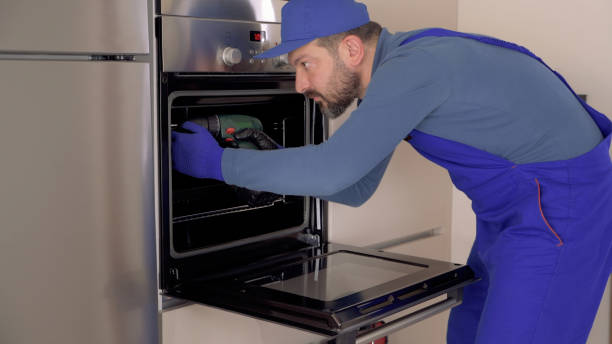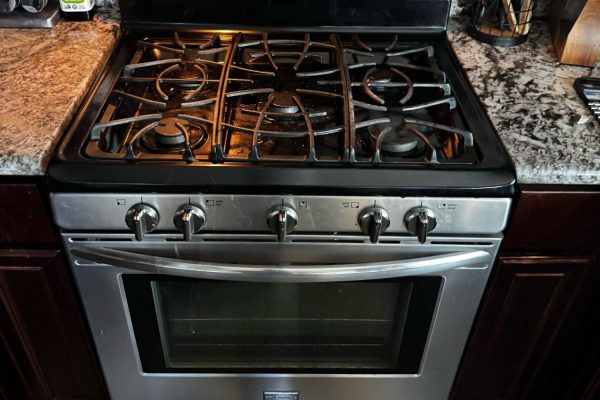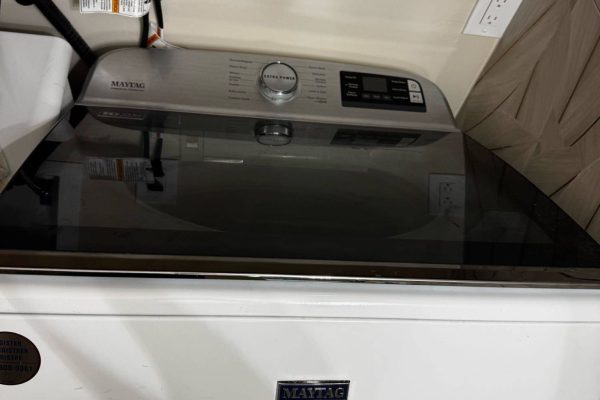An oven is a cornerstone appliance in any kitchen, used for baking, roasting, and cooking a variety of delicious meals. However, oven leaks can compromise its efficiency and safety, leading to energy waste, uneven cooking, and potential hazards. Preventing and repairing oven leaks is essential for maintaining optimal performance and ensuring a safe cooking environment. In this article, we’ll explore effective methods to prevent and repair oven leaks, safeguarding your appliance and enhancing your culinary experience.
Understanding Oven Leaks
Oven leaks occur when hot air escapes from the oven cavity, door, or seals, compromising its ability to maintain consistent temperature and heat distribution. Common causes of oven leaks include worn door gaskets, damaged door hinges, faulty door seals, and gaps or cracks in the oven cavity or door assembly. Recognizing the signs of oven leaks and addressing them promptly is crucial for preventing energy waste, reducing cooking time, and avoiding potential safety hazards.
Preventive Methods to Avoid Oven Leaks
Regular Maintenance:
Performing routine maintenance on your oven helps identify and address potential issues before they escalate into leaks. Inspect the oven door gasket, hinges, and seals regularly for signs of wear, damage, or deterioration. Clean the door gasket and seals with a mild detergent and warm water to remove dirt, grease, and food residue that can compromise their effectiveness.
Check Door Alignment:
Ensure that the oven door is properly aligned and closes tightly to create a secure seal. If the door is misaligned or does not close properly, it may allow hot air to escape from the oven cavity, leading to leaks. Adjust the door hinges or latch mechanism as needed to achieve a snug fit and prevent air leaks.
Replace Worn Door Gaskets:
The door gasket, also known as the oven seal, creates a tight seal around the oven door to prevent heat loss and leaks. Over time, the door gasket may become worn, torn, or compressed, compromising its ability to seal the oven cavity effectively. Replace worn or damaged door gaskets promptly to maintain optimal oven performance and prevent energy waste.
Seal Gaps and Cracks:
Inspect the oven cavity and door assembly for gaps, cracks, or openings that may allow hot air to escape. Use heat-resistant silicone sealant or oven door gasket adhesive to seal any gaps or cracks in the oven cavity or door frame. Ensure that the sealant or adhesive is applied evenly and allowed to cure completely before using the oven.
Avoid Overloading:
Overloading the oven with too many dishes or overcrowding the oven racks can obstruct airflow and lead to uneven cooking, hot spots, and potential leaks. Follow the manufacturer’s guidelines for oven capacity and spacing between dishes to ensure proper air circulation and heat distribution. Use multiple oven racks when necessary, spacing them evenly to allow for optimal airflow.
Repairing Oven Leaks
Replace Door Gaskets:
If the oven door gasket is worn, torn, or damaged, it should be replaced to restore a tight seal and prevent leaks. Remove the old door gasket from the oven door and clean the gasket channel thoroughly. Install the new door gasket according to the manufacturer’s instructions, ensuring that it is positioned correctly and securely fastened in place.
Adjust Door Hinges:
Misaligned or loose door hinges can prevent the oven door from closing properly, leading to leaks. Inspect the door hinges for signs of wear, damage, or misalignment, and adjust or replace them as needed. Follow the manufacturer’s instructions for adjusting door hinges to achieve a snug fit and proper alignment.
Replace Door Seals:
Faulty door seals can allow hot air to escape from the oven cavity, resulting in leaks and energy waste. If the door seals are damaged, cracked, or loose, they should be replaced to ensure a tight seal. Remove the old door seals and install the new seals according to the manufacturer’s instructions, ensuring that they are securely attached and form a continuous seal around the oven door.
Seal Gaps and Cracks:
If gaps or cracks are present in the oven cavity or door assembly, they should be sealed to prevent air leaks. Use heat-resistant silicone sealant or oven door gasket adhesive to seal any gaps or cracks, ensuring that the sealant is applied evenly and allowed to cure completely before using the oven.
Preventing and repairing oven leaks is essential for maintaining optimal oven performance, energy efficiency, and safety. By implementing preventive measures such as regular maintenance, checking door alignment, replacing worn door gaskets, sealing gaps and cracks, and avoiding overloading, you can minimize the risk of oven leaks and ensure a tight seal. If leaks do occur, promptly repair them by replacing worn door gaskets, adjusting door hinges, replacing faulty door seals, and sealing gaps and cracks. By taking proactive steps to prevent and repair oven leaks, you can enjoy efficient cooking and baking results while prolonging the lifespan of your oven.
We have appliance repair experts available today! Call a professional Poway Appliance Repair Service Center technician by phone or book your service.
Our service center is open 24/7, so you can easily schedule a convenient repair time. The specialist will arrive at the agreed time, carry out a diagnosis, and, if necessary, offer repairs. If you are willing, your appliance will be repaired directly on-site within 1-2 hours. We provide top-notch service at an affordable price!
Contact us


